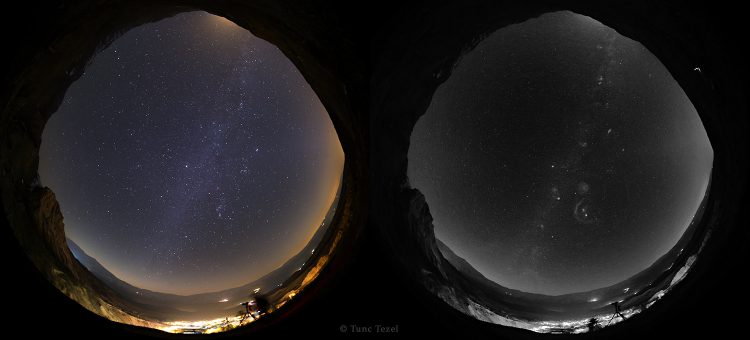Night Sky in H-alpha
Description
The night sky has much more than could be viewed with the naked-eye. The left-side all-sky view is a “normal” nightscape image of winter stars above the Alamut Castle and village of Gazor Khan in the Alborz Mountains, Iran. The prominent figure of Orion is obvious in the middle-right. On the right image the photographed has used a H-alpha filter (for DSLR cameras) that blacks most of the visible light except for a narrow band in the red part of the spectrum where the emission nebulae in the night sky are most shining. The large arch in Orion is known as Barnard Loop, a remnant of an ancient supernova. The little round bright cloud in the center is the Rosette Nebula.More of this cosmic clouds are visible along the Milky Way in Cassiopeia (top), Perseus, and over the southern horizon (bottom) in Canis Major and Puppis. Even part of the giant (and faint) southern sky supernova remnant known as the Gum Nebula is peeking above the horizon (bottom).

comments (1)
Beautiful. I never thought that it is possible to shoot nebulas and galaxies without powerful telescopes.
March 23, 2014 at 11:53 am